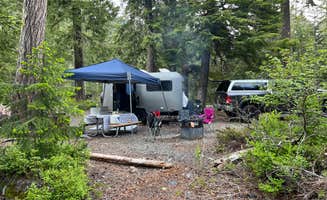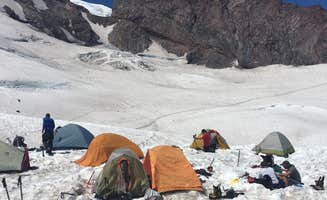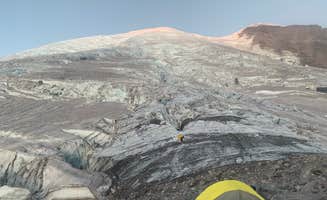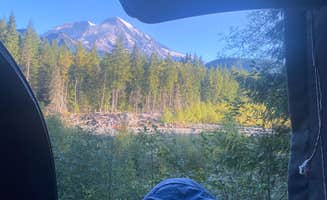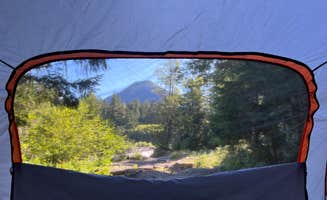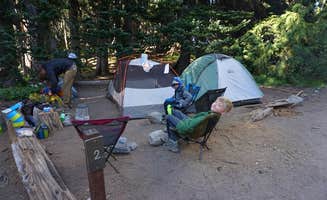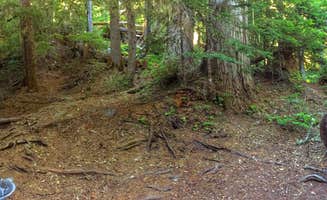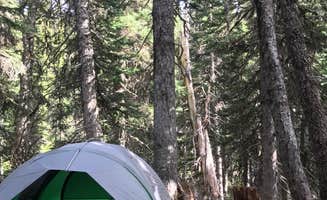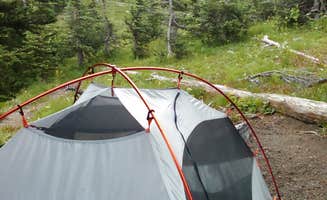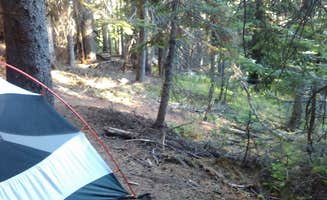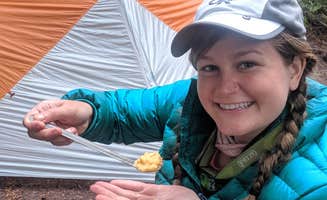Near Mount Rainier National Park, camping spots near Paradise, Washington range in elevation from 1,800 to 6,400 feet, creating distinct climate zones and camping experiences throughout the season. Nighttime temperatures can drop into the 30s even during summer months, with frost possible at higher elevations. Many campgrounds require visitors to store food in bear-resistant containers due to active wildlife in the region.
What to Do
Hiking to alpine lakes: Silver Springs Campground provides direct access to riverside trails and serves as a gateway to Mount Rainier's northeastern attractions. "There is good hiking along the river from the campground," explains Jeff C., while another camper notes, "There is a nice little hike and super cool river spots you can access."
Stargazing in meadows: Elkamp Eastcreek offers exceptional night sky viewing opportunities away from city light pollution. "Acres to gorgeous meadow and evening star viewing," shares Susan S. The campground's location outside the national park boundaries means fewer crowds and better viewing conditions.
Swimming in natural pools: During late summer, the White River offers refreshing swimming opportunities when water levels decrease. At La Wis Wis Campground, visitors appreciate the natural water features: "Rope swings and places to jump off just down the road," notes Shariah T., while another camper mentions, "Water is very cold but there are lots of swimming holes and even a rope swing."
What Campers Like
Off-season solitude: September camping at White River Campground offers significantly fewer crowds while maintaining access to key attractions. "Like most campgrounds in Washington by Sunday afternoon the campground is empty. For your best camping experience here camp Sunday through Wednesday," advises Jeff C.
Natural sound buffers: Many campers appreciate the natural white noise at river-adjacent sites. At Big Creek Campground, visitors can select sites based on preferred soundscapes: "We had one of the best spots with access to the stream," shares Bobby B., while at White River, another camper notes, "The sound of soft moving water runs throughout the campground providing a beautiful and tranquil camping experience."
Early access to trailheads: Staying at Mowich Lake Campground positions hikers for early morning starts before day-use visitors arrive. "We did the Tolmie Peak trail and the trailhead is straight off the campground which is super nice," says Megan H., making it ideal for photographers seeking sunrise shots without pre-dawn drives.
What You Should Know
Fire restrictions vary by location: Unlike many nearby campgrounds, Mowich Lake prohibits campfires entirely. "No fires allowed. Sadly you cannot build a fire here so it does get really cold at night time because there are glaciers in the park," explains Kevin T.
Reservation windows: For popular campgrounds, planning several months ahead is essential. At Cougar Rock Campground, Zane G. advises, "Get your reservations in the winter before your trip. Spots fill up fast."
Road conditions to dispersed sites: High-clearance vehicles are recommended for accessing many dispersed camping areas. At White River Dispersed Camping, Reagan S. reports, "Road gets a bit worse as you drive further, but it was manageable," while another visitor notes, "4x4 / high clearance vehicles recommended - saw some subarus trying to navigate into a cleared area and it was pretty scrape-y."
Tips for Camping with Families
Ranger programs: Several campgrounds offer educational activities for children. At Ohanapecosh Campground, JE K. shares, "Very family friendly with large and small camp sites. Great for multiple family outings... fun ranger programs."
Protected swimming areas: Families with younger children should seek campgrounds with gentler water access. "Blue hole is breathtaking," notes Laura H. about La Wis Wis, while another camper describes, "The kids had fun riding bikes around."
Multi-site reservations: For family groups, coordinating adjacent site bookings enhances the experience. Mary C. recommends, "There is a group site, but when we have gone we just get a few spaces clustered together on the river. Works well and gives the little ones nice space to play in between camp sites."
Tips from RVers
Low-hanging branches: RVers should exercise caution on campground access roads. At Silver Springs, one camper warns, "The roads through this campground are a bit tight and have a few low-hanging trees, so be aware if you have a larger rig. Our 32' fifth wheel was fine but I wouldn't want to go much longer than that."
Limited hookup availability: Most campgrounds within the national park have no hookups. At NF-52 Dispersed Camping area, RVers must be prepared for fully self-contained camping, while Big Creek Campground offers potable water but no electric connections. "Very spacious and much more private than Cougar Rock," notes one camper who found it a good alternative to in-park camping.
Dump station locations: No dump stations exist within the national park, requiring advance planning. Simple Joyful Journey notes that Silver Springs "has both dry camping and water/electric hookups, but no dump station," requiring a trip to facilities in neighboring towns.


